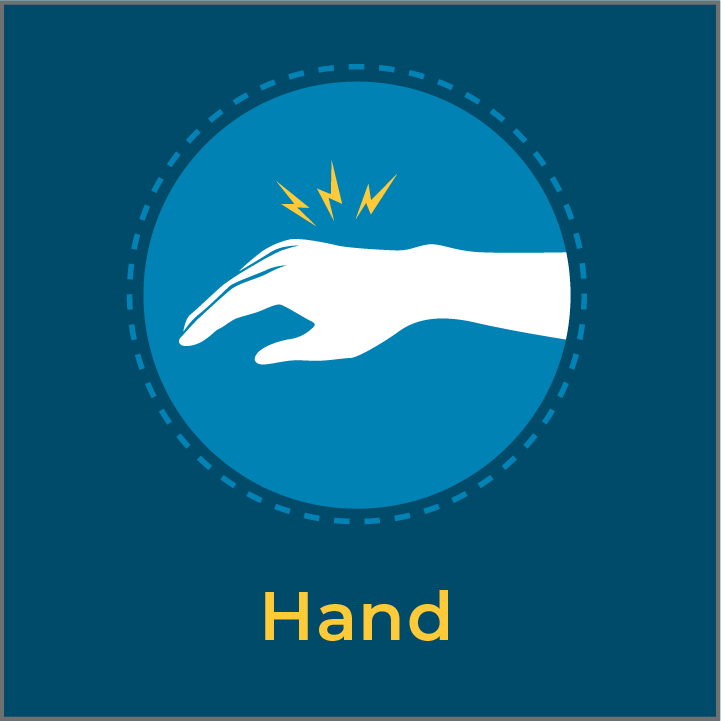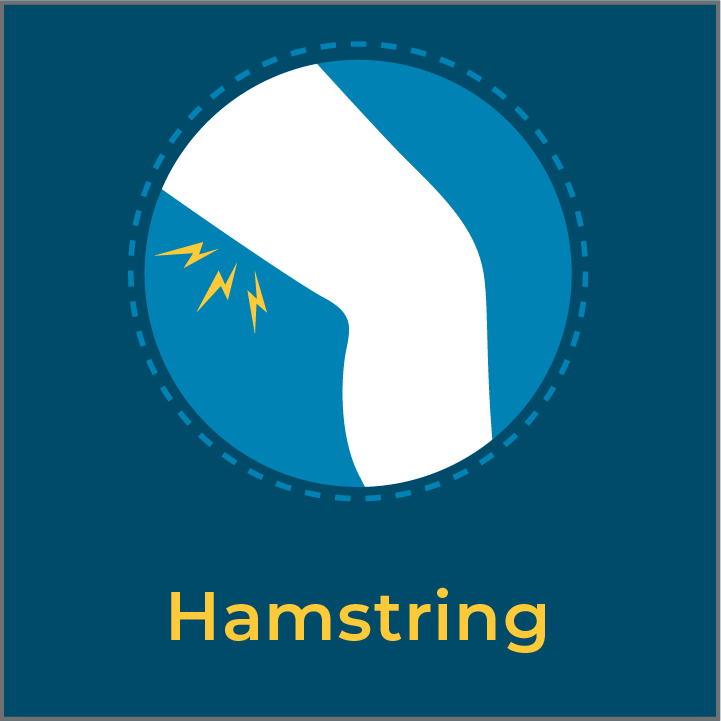- Focused Shockwaves
- Radial Shockwaves
- Unfocused Shockwaves
- High vs Low Energy Shockwave
What Are The Benefits of Shockwave Therapy?

Shockwave therapy offers a range of benefits that make it an appealing treatment option, including:
Natural Healing Promotion
Shockwave therapy works by sending sound waves into the affected tissues, which can stimulate increased blood circulation and cellular repair activity. This boosts the body’s natural healing process, helping tissues repair more rapidly.
Non-Invasive
One of the standout benefits of shockwave therapy is that it’s non-surgical. This means that patients can sidestep the risks and extended recovery periods typically associated with surgery.
Pain Reduction
Through its therapeutic process, shockwave therapy can alleviate pain associated with certain conditions. This offers a welcome relief for individuals looking for alternatives to medication or other invasive pain management techniques.
Mobility Improvement
For many, improved mobility is a noticeable benefit post-therapy. By addressing the root causes of pain and stimulating tissue repair, individuals often find they can move more freely and comfortably.
Cost-Effective
Compared to long-term medication or surgery, shockwave therapy can be a more economical option for some patients. However, this can vary based on individual medical needs and healthcare plans.
Limited Side Effects
While any medical procedure has potential risks, shockwave therapy typically has fewer side effects compared to surgical interventions or prolonged medication usage. Learn more about shockwave therapy side effects
What is Shockwave Therapy Used For?
Shockwave therapy has gained popularity in recent years due to its ability to treat a variety of musculoskeletal and soft tissue conditions . Here are conditions commonly treated with shockwave therapy:
- Foot Conditions: Plantar Fasciitis and Heel Spurs
- Tendinopathies: Including Achilles, Tennis Elbow, and Jumpers Knee
- Bone Issues: Stress Fractures and Delayed Bone Healing
- Calcific Conditions: Calcific Tendonitis and Shoulder Impingement
- Inflammation & Pain: Chronic inflammation
- Tissue Concerns: Scar tissue breakdown and non-healing ulcers.
Where Do You Find Shockwave Therapy?
Shockwave therapy facilitated a medical professional: Shockwave therapy is typically available at specialized medical centers, clinics, and physiotherapy facilities that offer advanced treatment for musculoskeletal and soft tissue conditions. Such centers are equipped with professional-grade machines operated by trained medical professionals who can provide tailored treatments based on individual needs.
At-home devices for shockwave therapy: At-home shockwave therapy devices have also entered the market. These devices allow individuals to undergo treatment in the comfort of their homes. However, it’s important to note that the effectiveness and settings of home devices may differ from those used in medical settings.
What Does Softwave Treat?
SoftWave can treat an array of physical injuries and conditions.


![]()

![]()

![]()

![]()


![]()



Find Your Softwave Provider
Where Does Shockwave Therapy Come From?
Originating from a deep understanding of natural shockwaves, shockwave therapy’s inception into the medical arena revolutionized non-invasive treatments. Its journey, from nature to today’s healthcare, tells a story of innovation and promise.
Shockwaves in nature
Shockwaves are essentially large amplitude waves formed due to sudden and intense disturbances in a medium. In simpler terms, they are powerful, fast-moving surges of energy.
What is a shockwave?
A shockwave is defined as a powerful surge of energy that travels through a medium, be it air, liquid, or solid. This wave is characterized by its rapid increase in pressure, speed, and intensity, which is then followed by a gradual decrease in pressure.
Where are shockwaves observed in nature?
Shockwaves are commonly observed in events like explosions, supersonic jet streams, and even in natural phenomena like earthquakes and volcanic eruptions. They can also be seen during the explosive impact of meteorites. These events cause rapid displacements of air or water, creating waves that move at high velocities.
Shockwaves in medicine
The transition of shockwaves from nature to medicine began with its application in treating kidney stones. Introduced in the 1980s, Extracorporeal Shock Wave Lithotripsy (ESWL) became a groundbreaking method to non-invasively fragment kidney stones. Inspired by its success, medical professionals saw potential beyond lithotripsy. Extracorporeal Shockwave Therapy (ESWT) soon found its place in orthopedics and physiotherapy. Today, it’s employed to address various musculoskeletal issues, from chronic pain conditions to promoting tissue regeneration and healing. Its adaptability and effectiveness underscore the pivotal role shockwave therapy plays in contemporary medicine.
Types of Shockwave Therapy

Shockwave therapy, with its roots in the exploration of nature’s powerful force, has evolved into various types to cater to different medical needs. The different types of shockwave therapies offer targeted solutions for various ailments, with their efficacy stemming from their unique propagation characteristics and mechanisms of action.
Focused Shockwaves
Focused shockwaves are precisely-targeted waves that can be directed to specific areas within the body. By generating these waves outside the body and focusing them on a particular point inside, medical practitioners can target and treat deeper-seated issues without the need for invasive procedures. Focused shockwaves are employed in the management of various conditions including chronic tendinitis, calcific shoulder tendinitis, and even certain cardiovascular diseases.
Radial Shockwaves
Radial shockwaves, often referred to as radial pressure waves, are generated using a pneumatic mechanism, where a projectile is accelerated within a handpiece to strike a transmitter, producing waves that fan out from their point of origin. These waves, despite their name, are not true shockwaves. The distinguishing factor lies in their dispersion: while true shockwaves have the ability to focus energy on a precise area, radial waves disseminate their energy more broadly, making their impact less concentrated. Nonetheless, radial shockwaves are effective for treating conditions closer to the skin’s surface, such as plantar fasciitis, tennis elbow, and other superficial musculoskeletal conditions.
Unfocused Shockwaves
Unfocused shockwaves disperse energy across a broader and deeper area of tissue. These shockwaves are typically produced through mechanisms like electrohydraulic methods, where electrical discharge is used to generate a spark underwater, resulting in a shockwave. Given their wider dispersion of energy, they’re often used for conditions that benefit from a more generalized therapeutic approach.
SoftWave therapy is the only true unfocused shockwave technology available today. It harnesses these broad-reaching waves to treat a variety of conditions, including diabetic foot ulcers, tendon diseases, musculoskeletal pains, and even assisting in wound and fracture healing.
High vs Low Energy Shockwave
High energy shockwaves pack a punch, delivering a powerful dose of energy typically in a single session. They are primarily harnessed for certain orthopedic ailments. In contrast, low energy shockwaves offer a gentler approach, often administered over multiple sessions, making them the go-to for conditions like tendonitis or calcifications.
Different Mechanisms of Generating Shockwaves
The therapeutic magic of shockwaves comes from diverse mechanisms, each with its distinct advantages:
- Electromagnetic Shockwave: Generated by passing an electrical current through a coil, thereby creating a magnetic field. Devices such as the Storz Duolith leverage this mechanism.
- Piezoelectric Shockwave: Here, crystals come into play. When exposed to an electric current, they generate shockwaves. The PiezoWave device exemplifies this technology.
- Electrohydraulic: An electric spark submerged in a liquid medium creates the shockwave upon discharge. The MODULITH SLK employs this method.
- Radial Waves: A more indirect approach, where a projectile is accelerated inside a handpiece, which then strikes a transmitter. Devices like the Swiss DolorClast showcase this mechanism. Read more about radial vs focused shockwave therapies .
SoftWave: A More Effective Shockwave Therapy
SoftWave has revolutionized decades-old shock wave technology to advance tissue healing and regeneration in healthcare fields like orthopedics, traumatology, wound care, aesthetics, and urology. The patented SoftWave device produces low-intensity unfocused shock waves that penetrate a wider and deeper area of tissue (7cm x 12cm), compared to focused shockwaves (1cm x 12cm) and radial waves (2cm x 2cm), which are not true shock waves.
SoftWave is the only true unfocused shockwave treatment available on the market today. This powerful technology can successfully initiate the body’s healing process without causing microtrauma.
